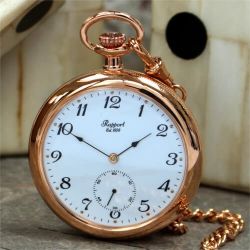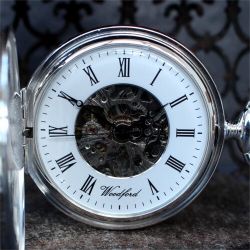What Is A Pocket Watch
A pocket watch is a timepiece carried in the pocket rather than worn on the wrist. The first pocket watches were invented in1510 by a German called Peter Henlein. A pocket watch can have a visible bezel, or it can be encased in silver or gold. The case is usually highly polished and can have a design or have engraving on it. A pocket watch is used with a silver or gold chain and its length depends where it is worn. Either the waistcoat, lapel or belt loop. The chain or ornaments on it are known as a 'fob'. They often have a hinged metal cover to protect the face of the watch; pocket watches with a fob and cover are often called 'fob watches'. Also common are fasteners that are put through a buttonhole and worn in a jacket or waistcoat, this type are frequently associated with and named after train conductors.
Variety of Pocket Watches
- An Open Face is a pocket watch without a lid. The watch face is always visible.
- A Half Hunter pocket watch has a lid with a small round glazed window. The time can be seen when the lid is closed.
- A Full Hunter has a protective lid that can be opened to reveal the watch face.
- A Double Hunter has two lids covering both the back and front of the pocket watch. The movement can be seen in this design.
- A Half Double Hunter has two lids covering the back and front of the pocket watch, but the front face has a small round glazed window. The time can be seen when the lid is closed and the movement can be seen in this design.
- Pocket watches with protective covers can also be used as a light collector to illuminate the dial in poor lighting. The second hand is traditionally set at twelve o'clock and the stem (or pendant) of an open-faced pocket watch is also placed at this position. The hunter's stem is traditionally placed at the three o'clock position and is rotated to 90 degrees with the stem pointing to the right when telling the time.


